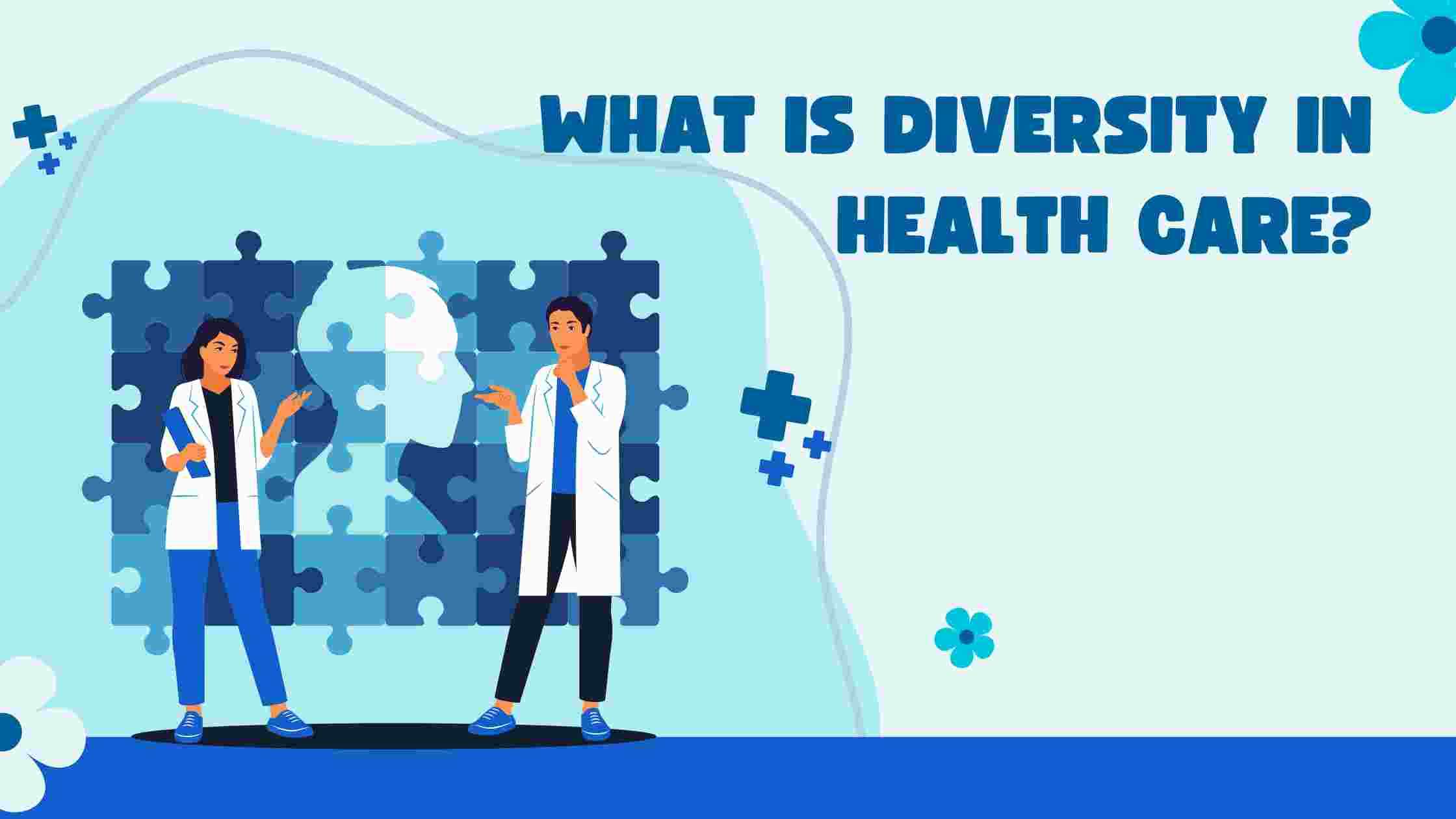A Comprehensive Guide to Understanding and Embracing Diversity in the Healthcare Sector
Table of Contents
- Introduction
- What is Diversity in Health Care?
- Why is Diversity Important in Health Care?
- Key Dimensions of Diversity in Health Care
- Benefits of Diversity in the Healthcare Workforce
- Challenges to Achieving Diversity in Health Care
- Health Disparities and the Role of Cultural Competency
- Strategies to Promote Diversity in Health Care Settings
- Diversity and Patient Outcomes
- Training and Education for Culturally Competent Care
- Policies and Legal Frameworks Supporting Diversity
- Real-life Case Studies and Success Stories
- Diversity and Health Equity
- The Future of Diversity in Health Care
- Conclusion
1. Introduction
The inclusion and consideration of diverse demographic groups in the patient population and healthcare personnel is known as diversity in healthcare. It includes, among other things, socioeconomic status, language, physical ability, gender, sexual orientation, race, and ethnicity. Ensuring diversity in healthcare is essential for delivering fair, considerate, and efficient treatment to everyone as global societies grow more multicultural.
This article examines the idea of diversity in healthcare, including its significance, obstacles, and methods for creating a welcoming atmosphere. Additionally, we will look at how diversity affects health outcomes and how cultural competency can help close gaps.
2. What is Diversity in Health Care?
The acknowledgement, value, and integration of various demographic and cultural origins into healthcare procedures and institutions is known as diversity in healthcare. It encompasses a wide range of differences and goes beyond recognizing race and ethnicity. These include disparities in geography as well as gender, sexual orientation, socioeconomic position, religion, and disability.
Diversity in healthcare places a strong emphasis on equality and inclusivity in the provision of care, guaranteeing that everyone, regardless of background, gets the attention they need. It entails modifying care procedures to better suit a population’s varied requirements and creating an atmosphere in which medical professionals from different backgrounds can offer their distinct viewpoints.
3. Why is Diversity Important in Health Care?
The importance of diversity in healthcare cannot be overstated. There are several reasons why it is a critical component of an effective healthcare system:
- Cultural Competency: By embracing diversity, healthcare providers can better understand and meet the cultural, social, and religious needs of their patients, leading to improved patient care and satisfaction.
- Improved Patient Outcomes: When patients feel understood and respected, they are more likely to engage in treatment and follow medical advice, leading to better health outcomes.
- Healthcare Equity: Diversity helps address disparities in healthcare access and quality. By focusing on diversity, healthcare institutions can work towards more equitable care for all communities.
- Workforce Innovation: A diverse healthcare team brings a range of perspectives, leading to more creative and effective problem-solving approaches. This diversity can improve the quality of care and innovation in healthcare services.
- Reflecting Society’s Demographics: As healthcare institutions serve a diverse population, it is essential that the workforce reflects the demographic diversity of the community to foster trust and effective communication.
4. Key Dimensions of Diversity in Health Care
Diversity in healthcare is multidimensional. The key dimensions include:
- Ethnicity and Race: One of the most visible aspects of diversity, it includes cultural traditions, language, and beliefs that influence health behavior and care preferences.
- Gender and Sexual Orientation: Including a focus on gender identity, sexual orientation, and the healthcare needs of the LGBTQ+ community is crucial for providing inclusive care.
- Socioeconomic Status: Economic background plays a major role in access to healthcare and overall health outcomes. People from lower socioeconomic backgrounds often face barriers in obtaining quality care.
- Disability: People with disabilities may require specialized care and accommodations. Diversity includes addressing the healthcare needs of those with physical, intellectual, or developmental disabilities.
- Language and Communication: Language barriers can be a significant hurdle in delivering effective healthcare. Addressing linguistic diversity helps in better understanding and treatment.
- Religion and Spirituality: Religious beliefs can affect health decisions, treatment preferences, and care practices. Recognizing these aspects ensures respectful and inclusive care.
- Age and Generational Differences: Different age groups have unique healthcare needs, and understanding these variations is essential for delivering tailored care.
5. Benefits of Diversity in the Healthcare Workforce
A diverse healthcare workforce offers several key benefits:
- Enhanced Communication: A diverse team is better equipped to communicate with a wide variety of patients, building rapport and improving trust.
- Better Patient Care: Cultural competence among healthcare workers ensures that they understand and respect the values and needs of patients, leading to more personalized care.
- Improved Work Environment: Diversity within the workplace fosters an environment of collaboration, respect, and innovation, improving employee satisfaction and productivity.
- Broader Perspectives: Different backgrounds bring diverse problem-solving skills, which can lead to better healthcare practices and solutions.
- Attraction of Talent: A diverse and inclusive healthcare environment can attract a wider range of healthcare professionals, enriching the workforce.
6. Challenges to Achieving Diversity in Health Care
Despite the numerous benefits, achieving diversity in healthcare is not without its challenges:
- Implicit Bias: Healthcare professionals may unconsciously favor patients from similar backgrounds or make decisions based on stereotypes, which can affect patient care.
- Resource Constraints: Healthcare institutions may struggle to implement diversity initiatives due to limited resources, especially in rural or underserved areas.
- Lack of Diversity in Leadership: While there is growing diversity in healthcare teams, leadership positions remain disproportionately held by individuals from dominant groups.
- Cultural Insensitivity: Without proper training, healthcare providers may inadvertently disregard cultural differences, leading to misunderstandings and patient dissatisfaction.
- Structural Barriers: Issues such as unequal access to healthcare, discriminatory practices, and economic inequalities can hinder efforts to achieve true diversity in healthcare settings.
7. Health Disparities and the Role of Cultural Competency
Health disparities are differences in health outcomes that are often seen among different racial, ethnic, or socioeconomic groups. These disparities can be traced back to a lack of diversity and cultural competency in healthcare systems. Cultural competency refers to the ability of healthcare providers to deliver services that meet the social, cultural, and linguistic needs of patients.
Cultural competency involves understanding how a patient’s background, experiences, and values influence their health beliefs and behaviors. This is crucial in reducing health disparities and improving access to care for underserved communities.
8. Strategies to Promote Diversity in Health Care Settings
Promoting diversity in healthcare requires a proactive approach. Some strategies include:
- Recruiting Diverse Healthcare Professionals: Actively recruiting individuals from underrepresented groups to work in healthcare can help ensure that the workforce reflects the diversity of the patient population.
- Cultural Competency Training: Providing ongoing training for healthcare workers on cultural awareness, implicit bias, and communication skills is essential for improving patient interactions.
- Inclusive Policies and Practices: Healthcare institutions should implement policies that promote diversity and inclusion, such as equal pay, non-discrimination, and support for minority groups.
- Community Engagement: Engaging with diverse communities helps healthcare institutions understand their unique needs and challenges, leading to better care and outreach programs.
- Mentorship Programs: Offering mentorship to individuals from diverse backgrounds can help them advance in their healthcare careers and reach leadership positions.
9. Diversity and Patient Outcomes
Research has shown that diversity in the healthcare workforce is linked to improved patient outcomes. When patients are treated by providers who understand and respect their cultural backgrounds, they are more likely to feel comfortable, communicate openly, and follow medical advice.
Diversity also plays a critical role in reducing health disparities. By providing care that is tailored to the needs of diverse populations, healthcare providers can address gaps in care that disproportionately affect minority groups.
10. Training and Education for Culturally Competent Care
Culturally competent care requires healthcare providers to continuously learn and adapt to the changing demographics of their patient population. Medical schools, hospitals, and healthcare institutions can promote cultural competence through:
- Curriculum Integration: Medical and nursing schools should incorporate cultural competency into their curriculum to prepare future healthcare professionals to work with diverse populations.
- Ongoing Education: Healthcare workers should engage in lifelong learning about cultural competence through workshops, seminars, and training programs.
- Simulation and Role Play: Using simulations and role-playing exercises can help healthcare professionals better understand and navigate complex cultural situations.
11. Policies and Legal Frameworks Supporting Diversity
Numerous policies and legal frameworks support diversity in healthcare. These include:
- The Affordable Care Act (ACA): The ACA includes provisions that promote health equity by expanding access to care for underserved populations.
- The Civil Rights Act: The Civil Rights Act prohibits discrimination in healthcare settings based on race, color, religion, sex, or national origin.
- The Americans with Disabilities Act (ADA): The ADA mandates that healthcare facilities accommodate individuals with disabilities, ensuring that they have equal access to healthcare services.
- Cultural Competency Standards: Several healthcare accrediting bodies, such as the Joint Commission, require healthcare institutions to implement cultural competency standards as part of their accreditation process.
12. Real-life Case Studies and Success Stories
Many healthcare organizations have successfully implemented diversity initiatives, leading to improved patient care and workforce satisfaction. For example, the Cleveland Clinic has been recognized for its commitment to diversity and inclusion, with programs aimed at hiring a diverse workforce and improving care for minority populations.
Another example is the Mayo Clinic, which has made significant strides in cultural competency training for its staff, resulting in better patient satisfaction and better health outcomes for diverse patient groups.
13. Diversity and Health Equity
The idea that everyone should have an equal chance to reach their optimal level of health is known as health equality. Since it guarantees that all patients, regardless of background, have access to high-quality care, achieving diversity in healthcare is essential to advancing health equity.
Addressing socioeconomic determinants of health, which are frequently connected to health inequities and include living conditions, income, and education, is another aspect of health equity.
14. The Future of Diversity in Health Care
As societies continue to evolve, diversity and inclusion will inevitably need to be given even greater attention in the healthcare industry of the future. Underprivileged populations will benefit from improved access to care thanks to technological advancements like telemedicine and artificial intelligence. Ensuring universal access to these technologies, particularly for members of marginalized populations, will be challenging.
In the coming years, healthcare institutions will need to prioritize diversity and inclusion at every level, from recruitment and training to patient care and leadership.
15. Conclusion
Diversity in healthcare is not only morally required, but also necessary to ensure that all patients receive fair, excellent care. Healthcare organizations may enhance patient outcomes, lessen health inequities, and create a more welcoming and productive healthcare workplace by embracing diversity. Promoting diversity will be essential to fulfilling the requirements of a world population that is becoming more and more diverse as healthcare continues to change.
Read More: What is Discrimination in Health and Social Care?







